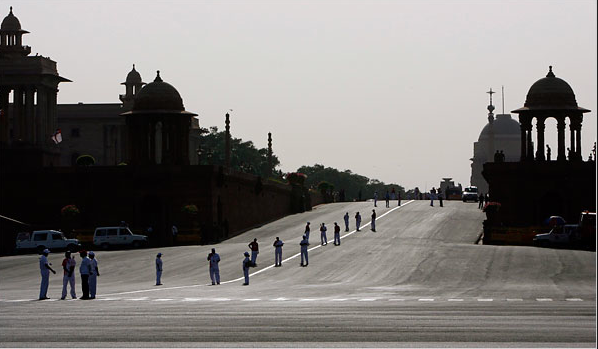The tradition of transporting the Olympic torch from Mt. Olympia to the Olympic Stadium via relay was inaugurated at the Eleventh Modern Olympiad, more commonly known as the 1936 Berlin Olympics, and under the watchful eyes of Adolf Hitler and the German Third Reich. Needless to say, there was no question that the spectacle, captured by Leni Riefenstahl in her documentary Olympia, served an explicit political purpose; and equally certain, there were no dissenters present at the event (or at least visible to the cameras that captured the occasion for posterity). Any discussion of the recent protests for human rights surrounding the relay of the torch to Beijing for the Twenty-ninth Modern Olympiad needs to begin by remembering the origins of the tradition.
China’s record of human rights violations have been featured in western photojournalistic venues recently, oscillating between images of the often brutal oppression of Tibetans and images of protesters around the world urging a boycott of the Beijing Olympics. And, of course, photographs of protesters challenging the Olympic relay have been especially prominent. The photograph below, however, is somewhat unique amongst such images and in its own way it is a provocative allegory for the problem that China and the International Olympic Committee face.
What we are looking at is the route that the Olympic torch was to take in New Delhi along Prakash Vir Shastri Avenue, the major boulevard that runs throughout most of the city and eventually passes Rashtrapati Bhavan, the palace and official residence of the President of India, seen here in the upper right hand corner of the photograph. Shot from on high and at a distance, the image situates the viewer as a spectator looking down upon the scene, but apparently not part of it. The wide angle underscores the fact that we are in a public space as it captures a major intersection in the road; the sharp contrast of shadow and light draws our attention away from the buildings on either side of the avenue to the width of the boulevard and the vectors that divide and guide the street traffic. According to the caption that accompanied the picture in the NYT, the people standing in the street are “officials wait[ing] for the torch … along a boulevard purged of spectators.”
The Olympic relay is designed as a spectacle, its ostensible purpose being to generate visible and worldwide enthusiasm for the pageantry and athletic events soon to follow. But, of course, a spectacle needs spectators, and here, the caption tells us, they have been “purged.” The choice of words is ominous, as is a midday image of a major boulevard in a major city absent any sign of its people. India is a democratic republic with a constitution that guarantees its citizens a wide range of civil rights, including freedom of speech and expression and the freedom of peaceful assembly. The dissent that is the product of such rights is essential to a vital democratic polity, but here apparently, the simple fear of anti-Chinese protests was enough to keep the public—supporters and dissenters alike— far enough away from the event so as to avoid “marr[ing] its appearance.” The irony is that in the process the Olympic relay in New Delhi was made into something of a caricature of itself. Designed to silence those who would urge a boycott on the Olympics, the photograph shows us what the effect of such a boycott might actually be: a spectacle without spectators.
From a slightly different vantage point, however, the photograph reinvests the viewer with a certain moral force, for while the framing distances us from the scene, it also nevertheless positions us as witnesses to a “purging.” And in this context it calls to mind the iconic photograph of the lone individual standing down a row of tanks in Tiananmen Square, shot on a similar public thoroughfare and from a comparable vantage. The difference, of course, is that the earlier photograph featured the liberal individual by his heroic presence, and here we are confronted with a democratic people by their forced and pronounced absence. What we need to remember is that in the end a functioning liberal-democracy requires both in some measure of equipoise and that we can never—not ever—let the fear of dissent compromise our commitment to either lest we destroy what we intended to save in the first place.
Photo Credit: Vijay Mathurs/Reuteurs

Discussion